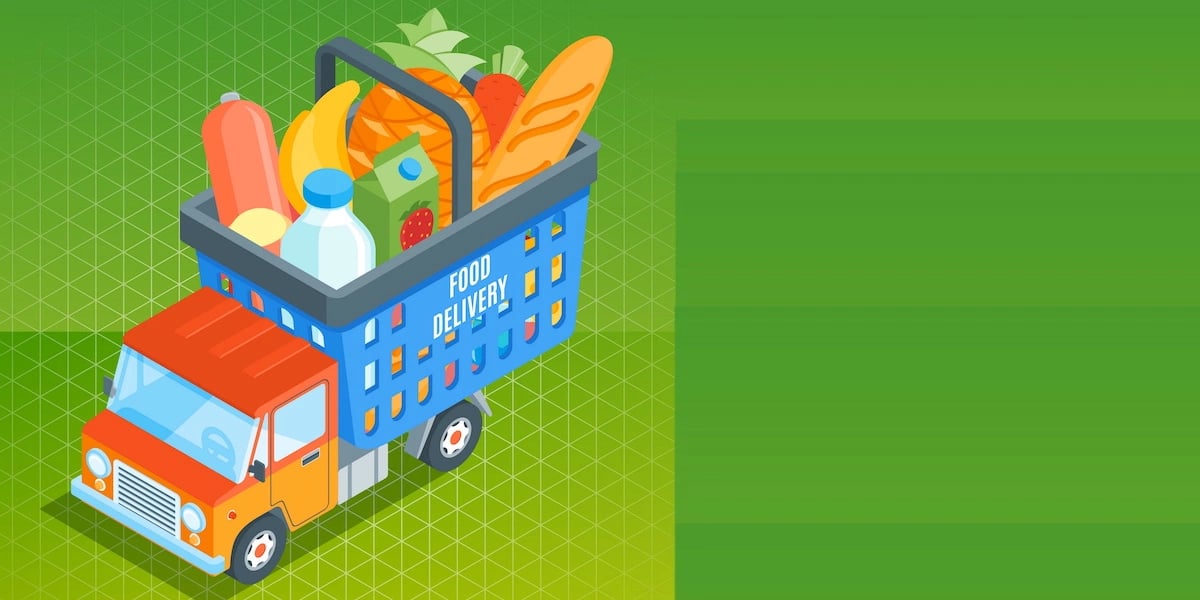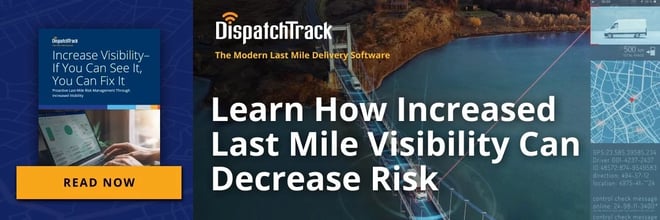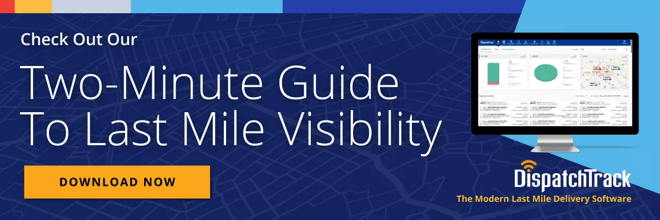It's no surprise that the food and beverage industry is no longer shying away from integrating digital technologies and solutions into their production and delivery workflows. After all, the industry is facing its share of challenges these days.

The COVID-19 pandemic, for one thing, is forcing everyone including food and beverage companies to adapt to the new normal more swiftly than they planned. A study by McKinsey revealed that more shoppers turned to online grocery shopping because of the COVID-19 pandemic. This, in turn, is pushing food companies to reorganize their supply chains to adapt. And this is just the tip of the iceberg.
Fortunately for food and beverage companies, there are now more food distribution technology solutions available than ever to help them overcome these challenges.
Here are some of the challenges facing the food and beverage industry and how food logistics software solutions in general and increased supply chain visibility in particular can help.
Food Safety Data
The rollout of the Food Safety Modernization Act (FSMA) prompted many companies to pay more attention not just to their sanitation problems but also to proper documentation of food safety plants and traceability of goods. Thus, for the food and beverage industry, digital transformation was no longer a choice, but mandatory.

One of the primary components of FSMA includes keeping detailed documentation of food safety plans. Food and beverage manufacturers need to show documentation on their adherence to best practices, as well as any corrective actions made when concerns about food safety are raised.
The FSMA includes the Sanitary Transportation Rule, which requires food processors to utilize technological solutions that can track and trace their products. Food logistics is no longer just about getting the finished products from distribution centers to shelves as quickly as possible. Modern food logistics requires companies to have the ability to trace their product from its origin to either the final customer or store shelves.
Manual tracking simply won't work anymore. It's hard to comply with FSMA rules when your documentation relies heavily on pen and ink or Excel spreadsheets. Digitization helps companies keep track of where and who received the products more easily and accurately.
This is an area where a cloud-based system for food logistics can make a huge difference. The right solution lets companies know where their data is and offers access to key personnel. Likewise, cloud-based logistics solutions allow the different applications food companies use to communicate with each other and help applications and systems be better integrated. This then makes food product tracing especially during product recalls easier and faster to manage. While the infrastructure around this hurdle can extend into many operational areas, it’s crucial that you don’t overlook the importance of tracking the last mile in particular when it comes to this use case. After all, when something goes wrong in transportation, the last mile is often the culprit—which means you need robust last mile visibility in order to complete the traceability picture.
Food Logistics Disruptions
When the pandemic happened, everyone had to adapt to the new normal. The pandemic added more disruption to the food supply chain, which was already frequently strained when it came to handling velocity and variety. To deal with volatile and constantly changing circumstances, food and beverage companies have had to increase both their visibility and resilience across the entire supply chain.

All of a sudden, real-time visibility across the supply chain became non-negotiable. Real-time delivery updates and full traceability have become a prerequisite for maintaining the level of agility required to deal with rapidly changing customer needs, shortages and outages, unstable delivery times, and more.
Efficient B2B Routing
We’ve written on this blog before about the importance of hybrid routing for B2B companies—particularly those in the food and beverage industry. Simply put: dynamic route optimization doesn’t make sense when you’re visiting the same restaurants, bars, and grocery stores on a recurring basis, but static routing doesn’t provide businesses with the agility they need to optimize their capacity utilization.
Hybrid routing can offer the best of both worlds—and while the ability to combine static and dynamic routing to stay agile even with recurring customers and orders is primarily a question of having the right routing technology, it’s not totally unrelated to visibility.
For instance, if you can see from constant status updates that a driver is going to wind up missing the delivery window at a particular restaurant by half an hour, you can call your contact at the establishment and ask if they’ll be able to wait an extra 30 minutes to receive the shipment. If they are, then visibility has enabled you to be proactive, and you don’t have to scramble to adjust your routes or risk a failed delivery. If they can’t wait the 30 minutes, then you have your work cut out for you—but you’re making routing decisions from a position of knowledge.
Offering a Single Source of Truth
It's hard for food and beverage manufacturers to distribute their products consistently across all channels without a high level of visibility. Buyers (even B2B buyers like grocery stores and restaurants) now demand faster access to information than ever. Thus, food and beverage manufacturers must share consistent data among all stakeholders by updating and centralizing information in real-time. This is the only way companies can efficiently share reliable and accurate information.
Fortunately, wholesale food distribution software solutions are available for enabling companies to manage delivery information effectively. These solutions centralize data and make it available to both internal and external stakeholders, so that everyone in the delivery chain knows exactly what’s happening. This can make a huge difference in an industry where delivery drivers have to avoid the lunch rush, navigate different business hours, and accommodate last minute order changes.
Digital transformation is taking place everywhere. For the food and beverage industry, adopting new technological solutions is necessary to overcome the challenges that have cropped up in the past few years. Luckily, the right food distribution technology can help companies comply with strict regulations, offer real-time visibility and a single source of the truth, and develop trust with customers.